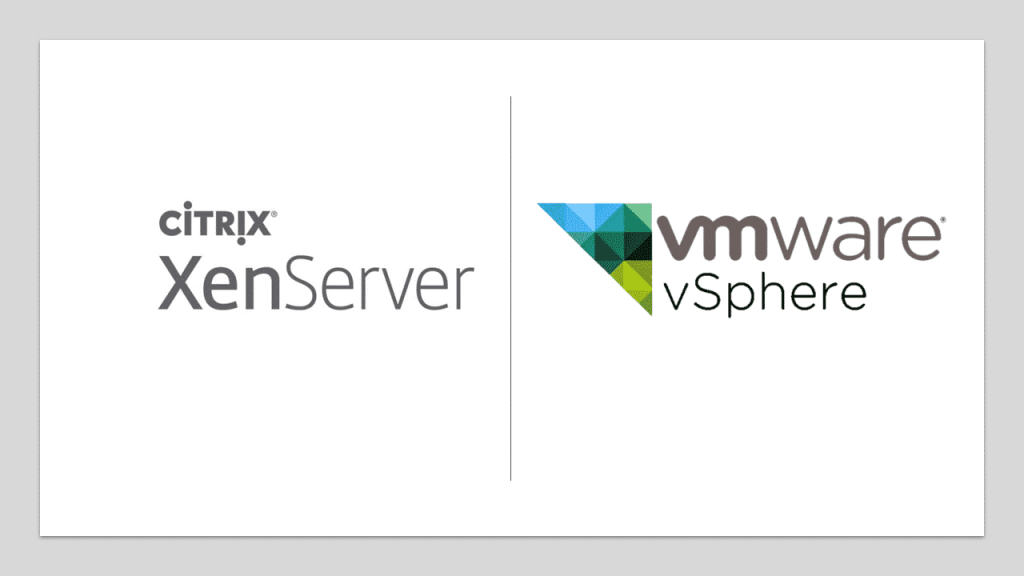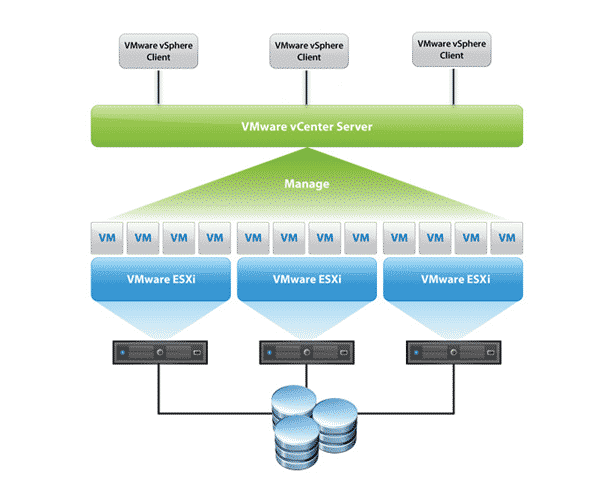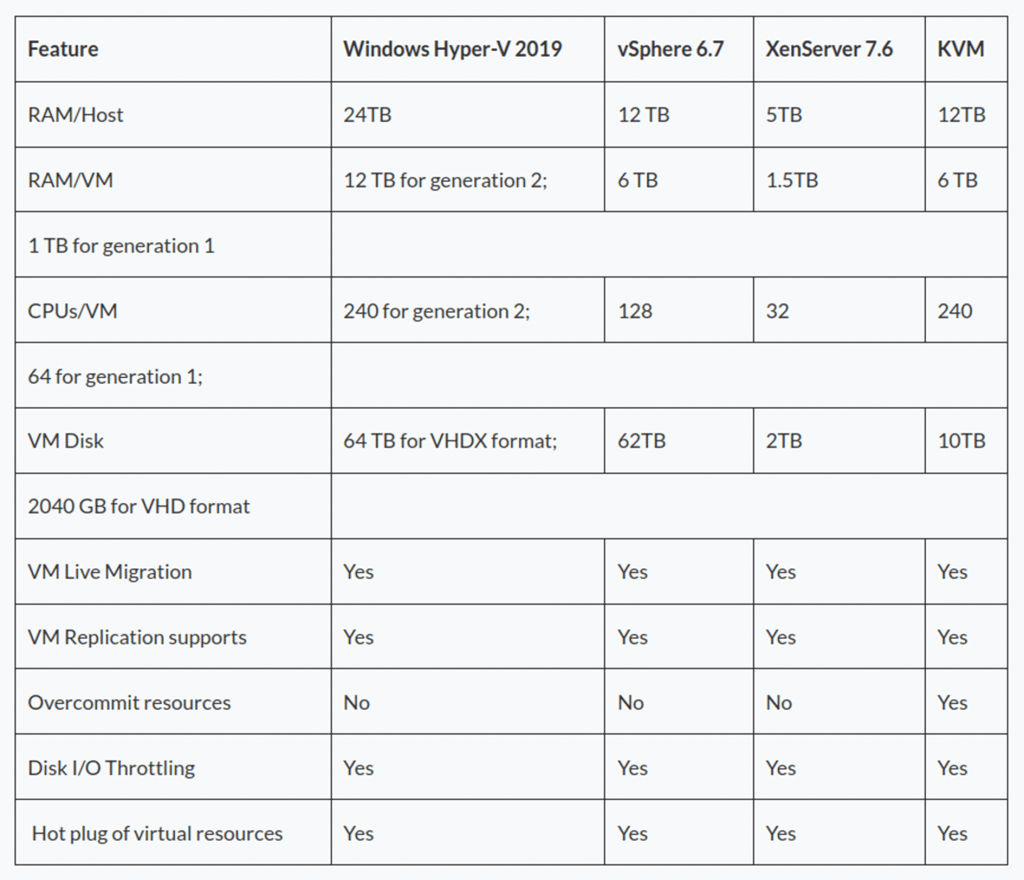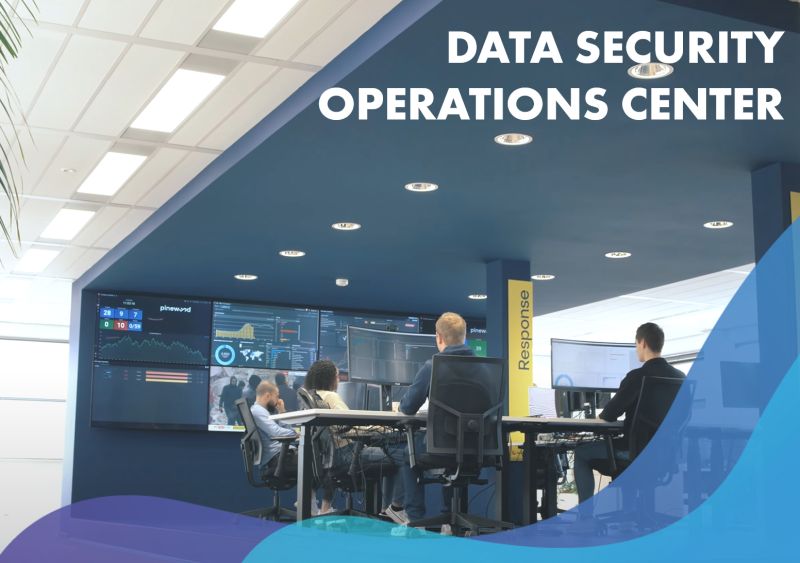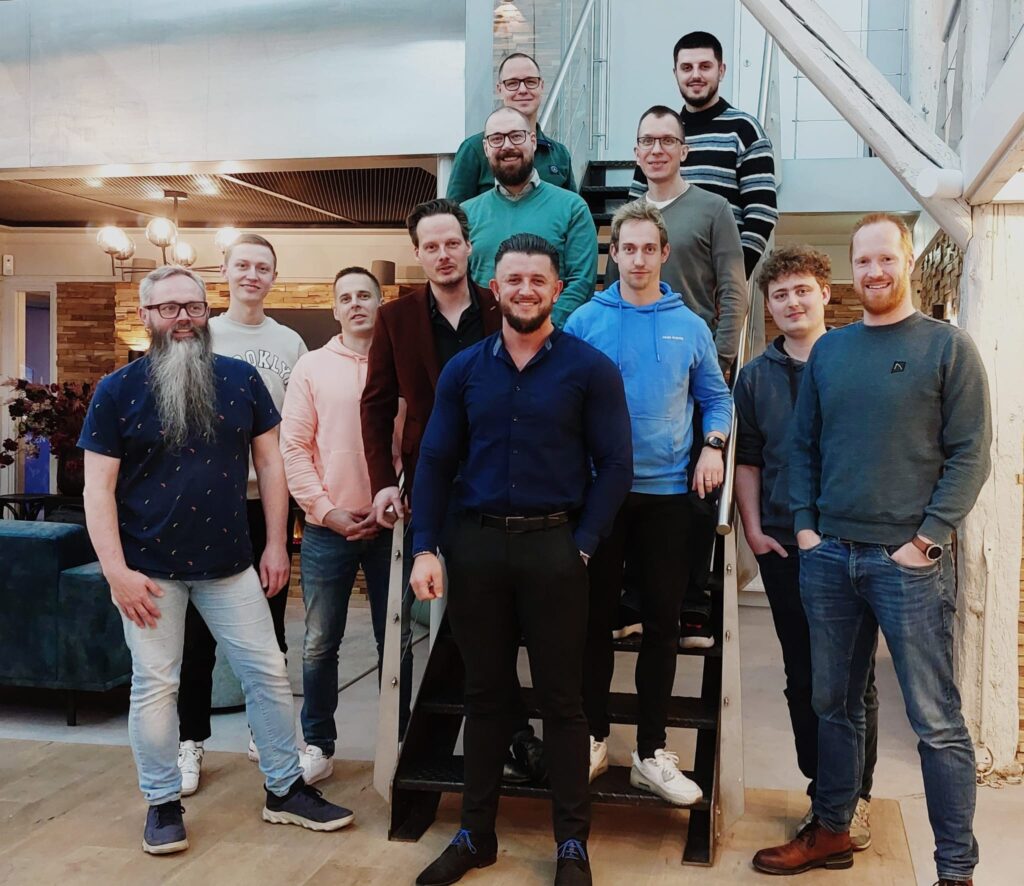In this whitepaper we take you through a customer story. A customer who provides hosted 3CX VOIP exchanges (PBX) as a service. 3CX is a software-based private branch exchange (PBX) based on the SIP (Session Initiation Protocol) standard. It enables extensions to make calls via the public switched telephone network (PSTN) or via Voice over Internet Protocol (VoIP) services. In this story we will tell you about the migration from Citrix XenServer to VMware vSphere and why the customer did this.
So, what is XenServer or vSPhere?
First, we will explain in short what these products do. Both are Type-1 hypervisors for running virtual machines. Type-1, native or bare-metal hypervisors run directly on the host’s hardware to control the hardware and to manage guest operating systems. For this reason, they are sometimes called bare-metal hypervisors. As you can read below, they both work similar but each with their own set of unique features.
Citrix XenServer / Citrix Hypervisor
XenServer is an open-sourced product from Citrix, based on Xen Project Hypervisor. It’s a bare-metal virtualization platform with enterprise-grade features that can easily handle workloads, combined OS, and networking configurations. XenServer delivers application performance for x86 workloads in Intel and AMD environments.
It can cater to Virtual Apps and Desktops deployments and offer customers the enhanced virtualized graphics with NVIDIA and AMD. XenServer services allow multiple computer operating systems to execute on same computer hardware.
VMware vSphere
VMware vSphere is a set of server virtualization products that includes virtualization, management, and interface layers. It comprises following core components- infrastructure services, including VMware Compute, Storage and Network; application services; vCenter Server – single point control across datacenter services; and clients who can access the data center via a web browser.
XenServer vs vSphere
In the table below you can see a quick compare between Hyper-V, vSphere, XenServer and KVM. Note that these versions are already super seeded but in our case the customer went from XenServer 7.6 to vSphere 6.7 for support reasons with 3CX software. One of the other reasons to move away from XenServer was the 2TB disk limit.
Why migrate to vsphere?
This specific customer was running Citrix XenServer for a long time. Everything worked out but the availability of the platform with the current way of working was not satisfactory anymore. Due to the high demand of high available products, XenServer was not able to keep up in case of a disaster. Recovery of a running PBX could take a long time and would take manual actions. Also centralized management of XenServer was not up to par for the customer. The time came for a license renewal and after weighing in the pros and cons the customer decided to move away from XenServer to vSphere.
The VMware Datacenter
The first task was to determine the required licenses vs functionality. We did this during our site scan that is included on our OneService proposition. After a comparison between XenServer and vSphere we came to the conclusion that VMware vSphere standard was offering more functionality than XenServer did. There was no reason to implement vSphere Enterprise at this moment. The main reasons to go for enterprise are the following functionality below. So, if you need those features then Enterprise is what you need and not Standard.
· Distributed Switch
Centralizes provisioning, administration, and monitoring by using cluster-level network aggregation.
· Host Profiles and Auto Deploy
Captures host-level configuration settings and saves them as a template to configure other vSphere hosts. Monitors hosts for configuration changes and automatically alerts vSphere administrators if a host falls out of compliance.
· Virtual Machine Encryption
Data-at-rest encryption for virtual machine data and disks
Since the customer did not require distributed Switches, Host Profiles, Auto Deploy or VM Encryption, the choice was made to use VMware vSphere Standard.
We build two new and separated vSphere environments in two different datacenters. Both fully isolated from each other with no L2 stretched networking. All HA functionality of vSphere is within each site and high availability over sites the is taken care of within the 3CX PBX software. Since 3CX software handles real time calls it was also required that DRS was not enabled so the appliances would always run on the same hosts. Further failure of an 3CX appliance would be recovered by HA within vSphere when needed.
The migration
A direct migration is not supported unfortunately. However, there are ways to migrate a XenServer VM to vSphere. The easiest way is:
1. Uninstall the Citrix VM Tools (Guest agent, VSS Provider, Tools Provider PV Driver)
2. Export VM from XenServer to an OVA template
3. Import OVA template in vSphere
4. Set the correct network adapter (VMXNET3)
5. Install VMware Tools
6. Presto migration successful
Another way is to use the VMware Converter. Just be sure to keep the same mac addresses when migrating. Also do not change disks, CPU or RAM during migration. Do this when the migration is successful.
Unforseen benefits
What we found out after migration was completed that the appliances were running far more efficient on vSphere then on the XenServer Hypervisor. Although 3CX supported XenServer, running the same appliance on vSphere was more efficient on CPU and RAM usage. Also, the real time VM latency decreased, and active calls were transferred quicker than before. To quantify this into a metric, we estimate a 15% improvement of the whole platform running on VMware vSphere vs running on XenServer.
OneService
With the addition of our professional 3rd line support on VMware, OneService, we help the customer to reduce the time to resolve issues on their new VMware platform. Also, our skilled engineers help and reduce the contact with VMware support to the most optimized way of working.
What do you get with OneService?
· Inventory of your environment at start, our SiteScan.
· Own personal Wiki for centrally sharing of company information
· Direct contact with one of our highly skilled RawWorks consultants
· Highly certified on VMware, Citrix and Microsoft
· Pay as you go
· Contract can be cancelled per month
Do you want OneService?
Do not hesitate to contact us via the website or via Bjorn de Bas if you want to hear more of RawWorks or of our services!

